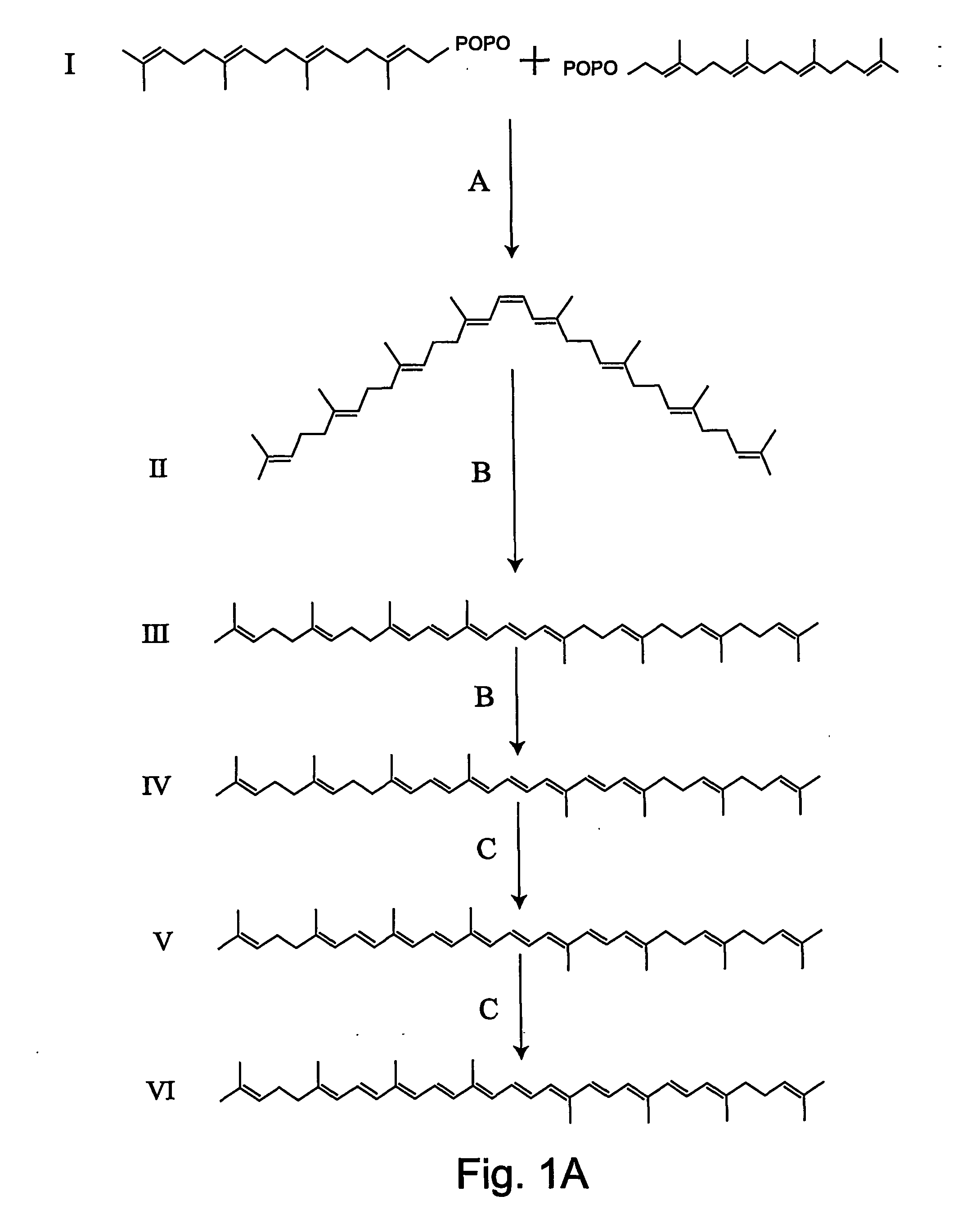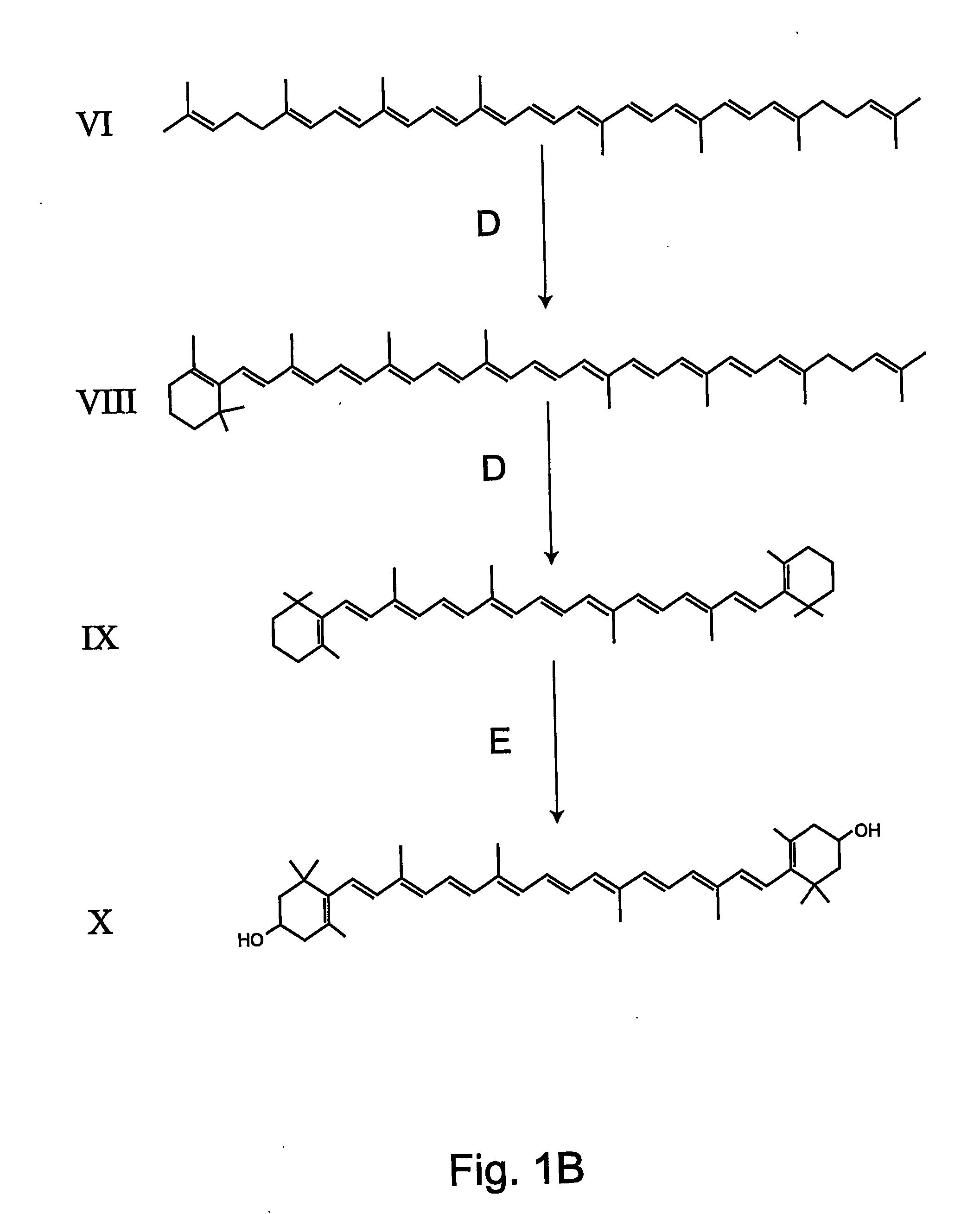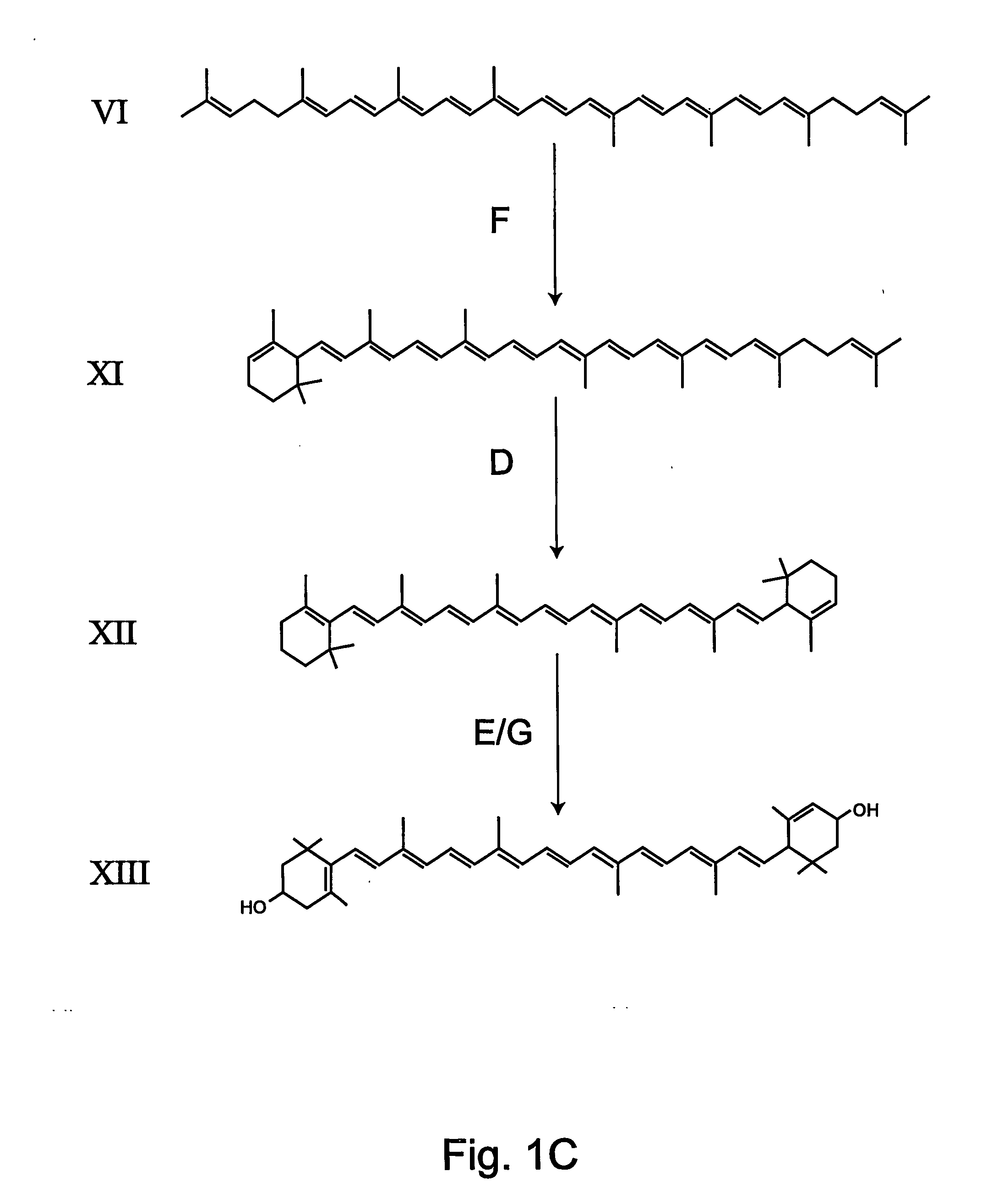Transgenic pineapple plants with modified carotenoid levels and methods of their production
a technology of carotenoid levels and pineapple plants, applied in plant cells, biochemistry apparatus and processes, enzymes, etc., can solve the problems of difficult conventional breeding to improve fruit quality and other agronomic traits, plant self-incompatibility, etc., and achieve the effect of increasing or decreasing the expression of a targeted carotenoid biosynthetic gene and increasing or decreasing the expression
- Summary
- Abstract
- Description
- Claims
- Application Information
AI Technical Summary
Benefits of technology
Problems solved by technology
Method used
Image
Examples
example 1
Introduction of Phyotene Synthase Gene (PSY) Gene from Tangerine into Pineapple (Transgenic Line 16.5.9)
1. Isolation of PSY Gene from Citrus
[0175] i. Primer Design
[0176] Two primers were designed based on the sequence information of PSY-Naval (Accession No. Gi 5959859):
Forward primer PSY-F:5′-aaa ctg cag atg tct gtt aca ttg ctg tgg-3′Reverse primer PSY-R:5′-gat atc tta agc ctt act ggt ata tat tct tg-3′
[0177] ii. RNA Isolation
[0178] Total RNA was extracted from Tangerine leaf tissue with Trizol solution (Invitrogen, Inc., CA, USA). The extraction was performed according to the manufacture's procedure.
[0179] iii. Reverse Transcription Reaction
[0180] Reverse transcription was carried out with 1 μg of total RNA and 1 μl of 10 μM PSY-R primer in 20 μl reaction volume.
[0181] iv. PCR to Isolate PSY Gene
[0182] PCR was performed with PSY-F and PSY-R primers in following reaction:
[0183] PSY-F (10 μM): 1 μl
[0184] PSY-R (10 μM): 1 μl
[0185] Reverse reaction: 1 μl
[0186] DNTPs (10 m...
example 2
Introduction of Phyotene Synthase Gene (PSY) Gene from Tangerine into Pineapple (13.18.2)
1. Isolation of Psy Gene from Citrus
[0203] Same as example 1.
2. Preparation of Source Tissues
[0204] i. Establishment of Shoot Cultures.
[0205] Same as example 1.
[0206] ii. Pretreatment of Explants for Cocultivation with Agrobacterium.
[0207] Rapidly growing shoots cultured as above for 4 months were used as explants. Tips of the long leaves (>15 mm) were cut off to provide smaller explants. Shoots were cut longitudinally into 3-8 sections and pretreated (cultured) on P2T10A medium for 10 days. Leaf bases and core sections were prepared and pretreated again on the same media for 62 days prior to transfer to another pretreatment medium. The sections with morphogenic tissues containing shoot primordial were subcultured onto T1.1I.1medium for 24 days. Organogenic tissues then were subcultured on B3N.2 medium for 22 days, then were cut into 3-5 mm sections and placed on B2N2 medium for 7 days,...
PUM
| Property | Measurement | Unit |
|---|---|---|
| concentration | aaaaa | aaaaa |
| concentration | aaaaa | aaaaa |
| volume | aaaaa | aaaaa |
Abstract
Description
Claims
Application Information
 Login to View More
Login to View More - R&D
- Intellectual Property
- Life Sciences
- Materials
- Tech Scout
- Unparalleled Data Quality
- Higher Quality Content
- 60% Fewer Hallucinations
Browse by: Latest US Patents, China's latest patents, Technical Efficacy Thesaurus, Application Domain, Technology Topic, Popular Technical Reports.
© 2025 PatSnap. All rights reserved.Legal|Privacy policy|Modern Slavery Act Transparency Statement|Sitemap|About US| Contact US: help@patsnap.com



